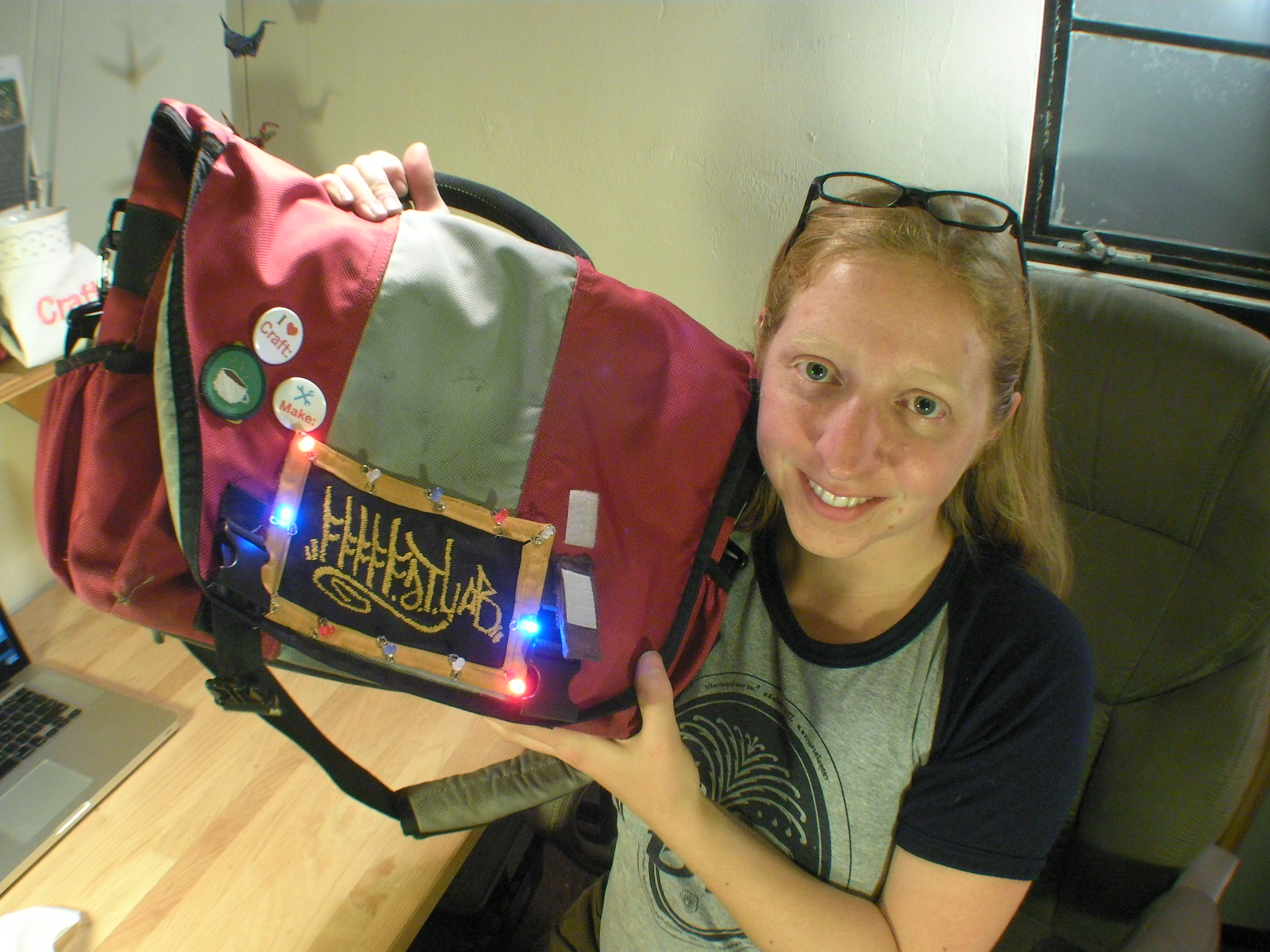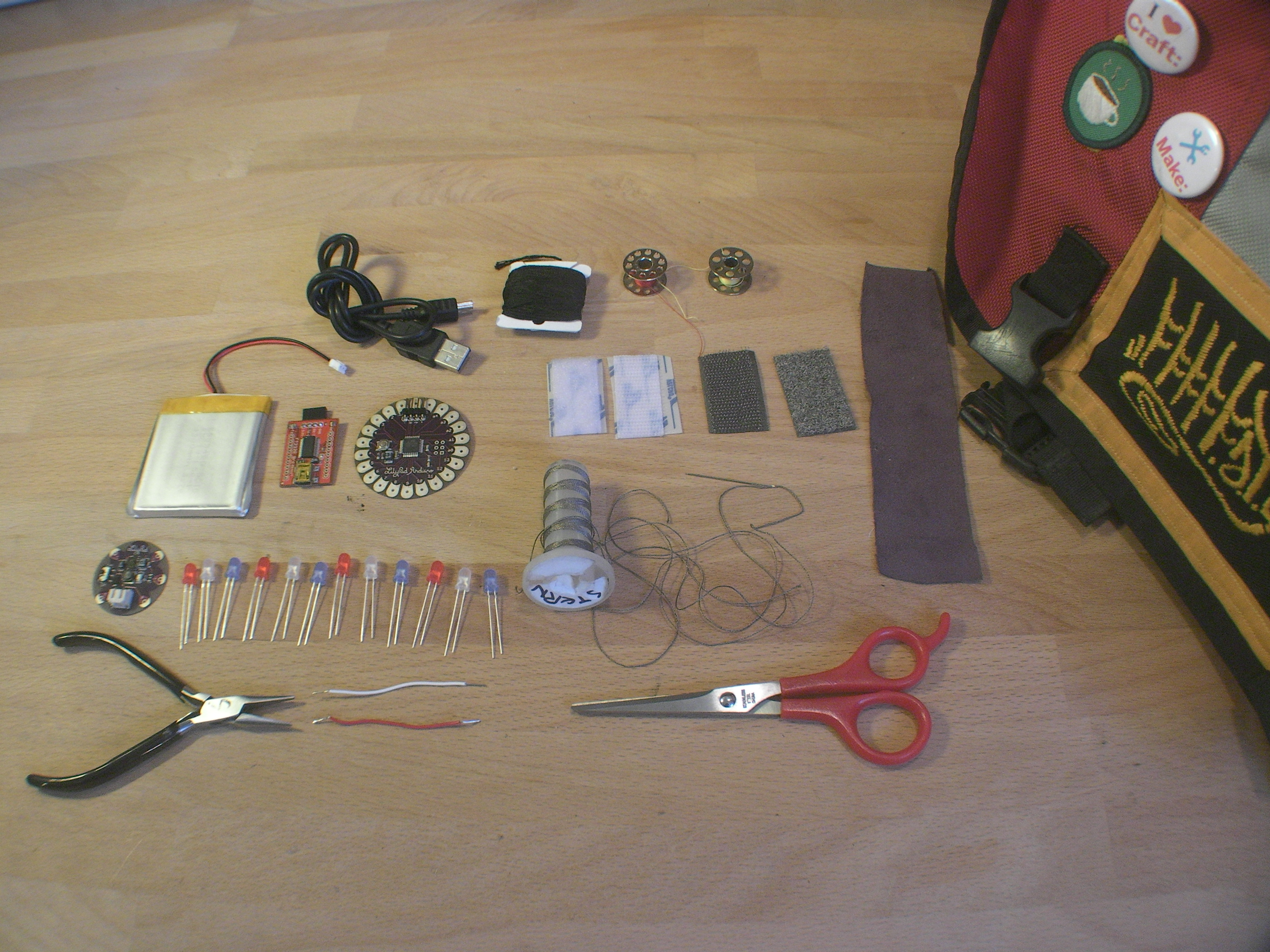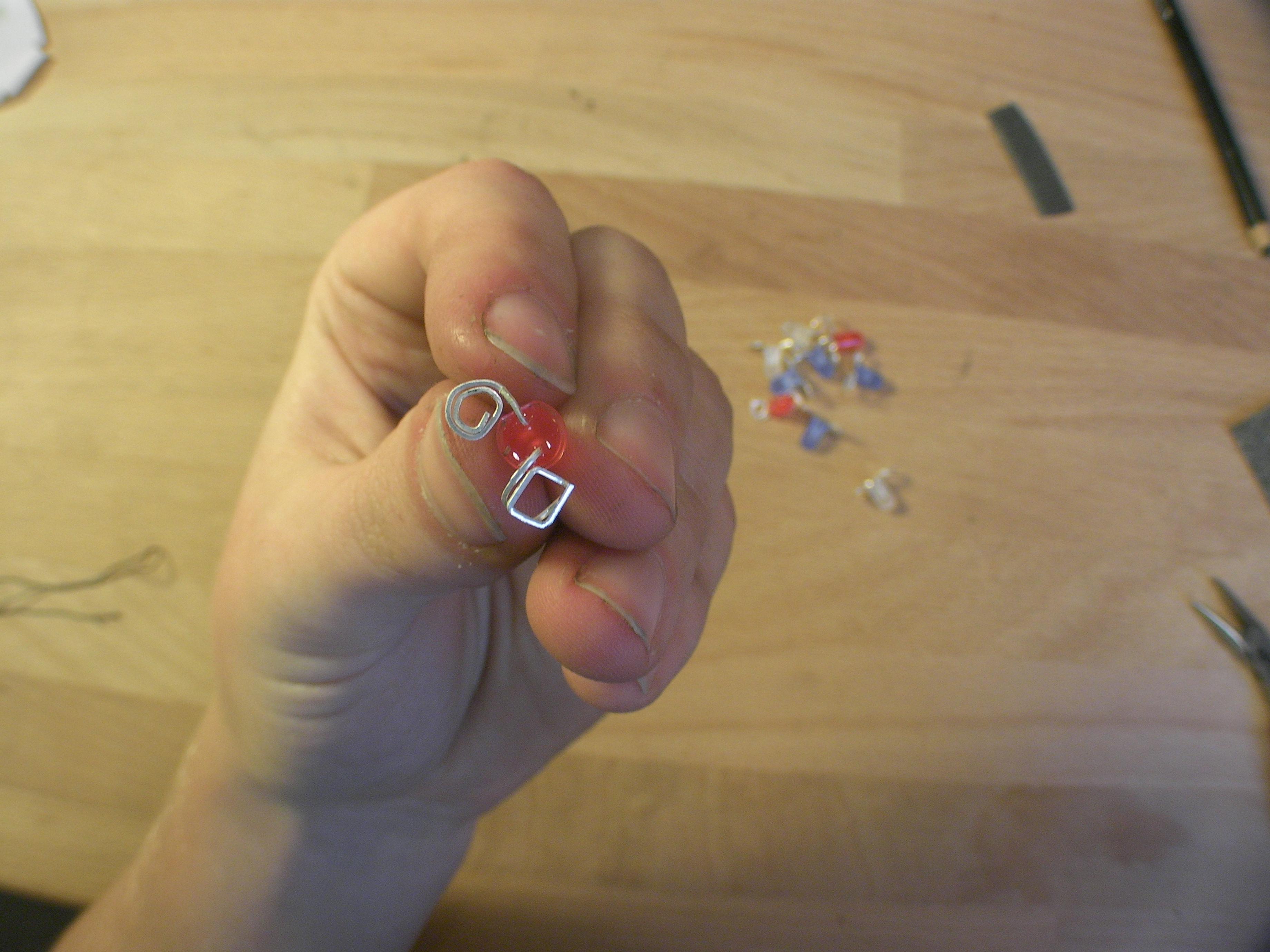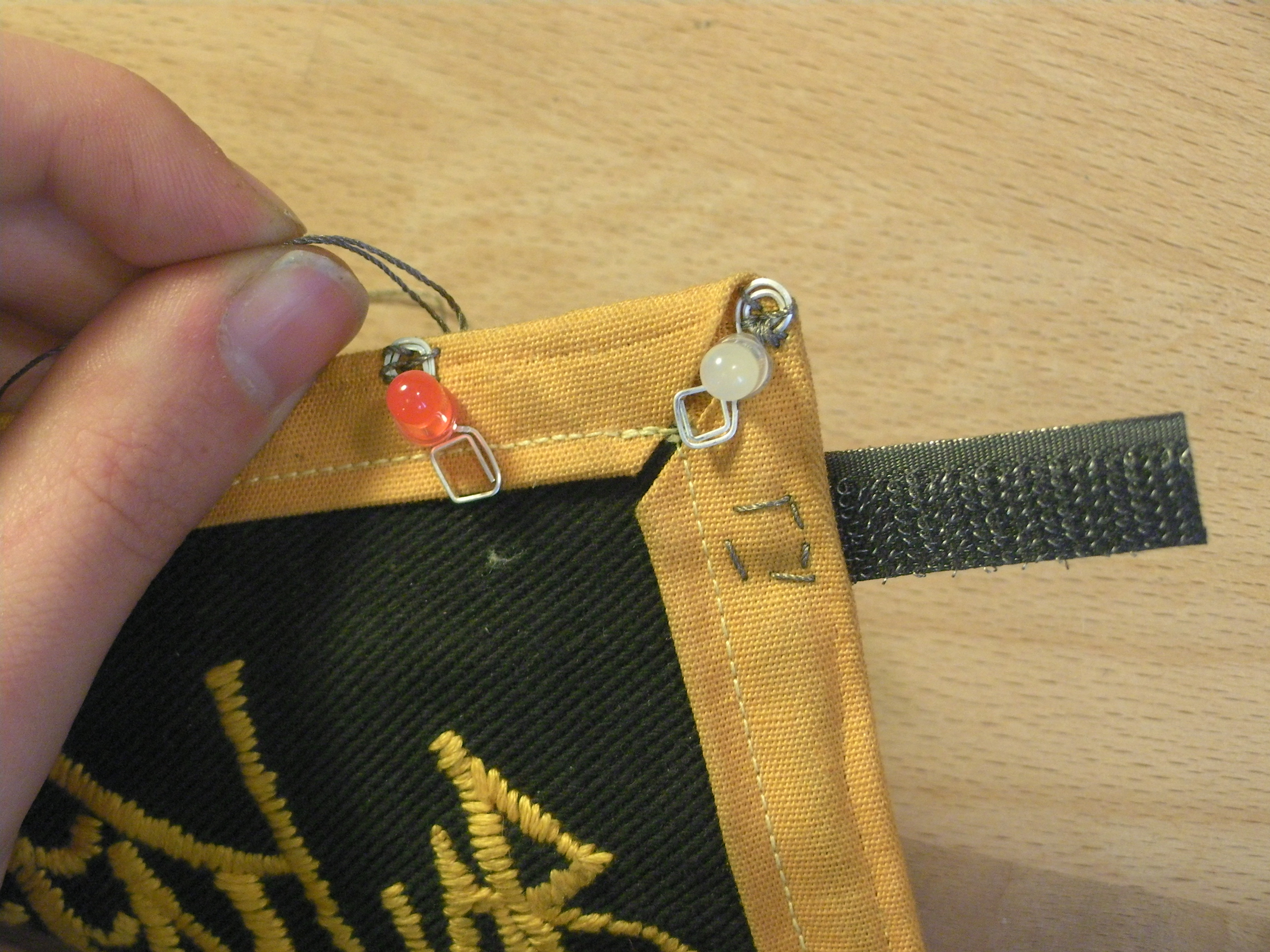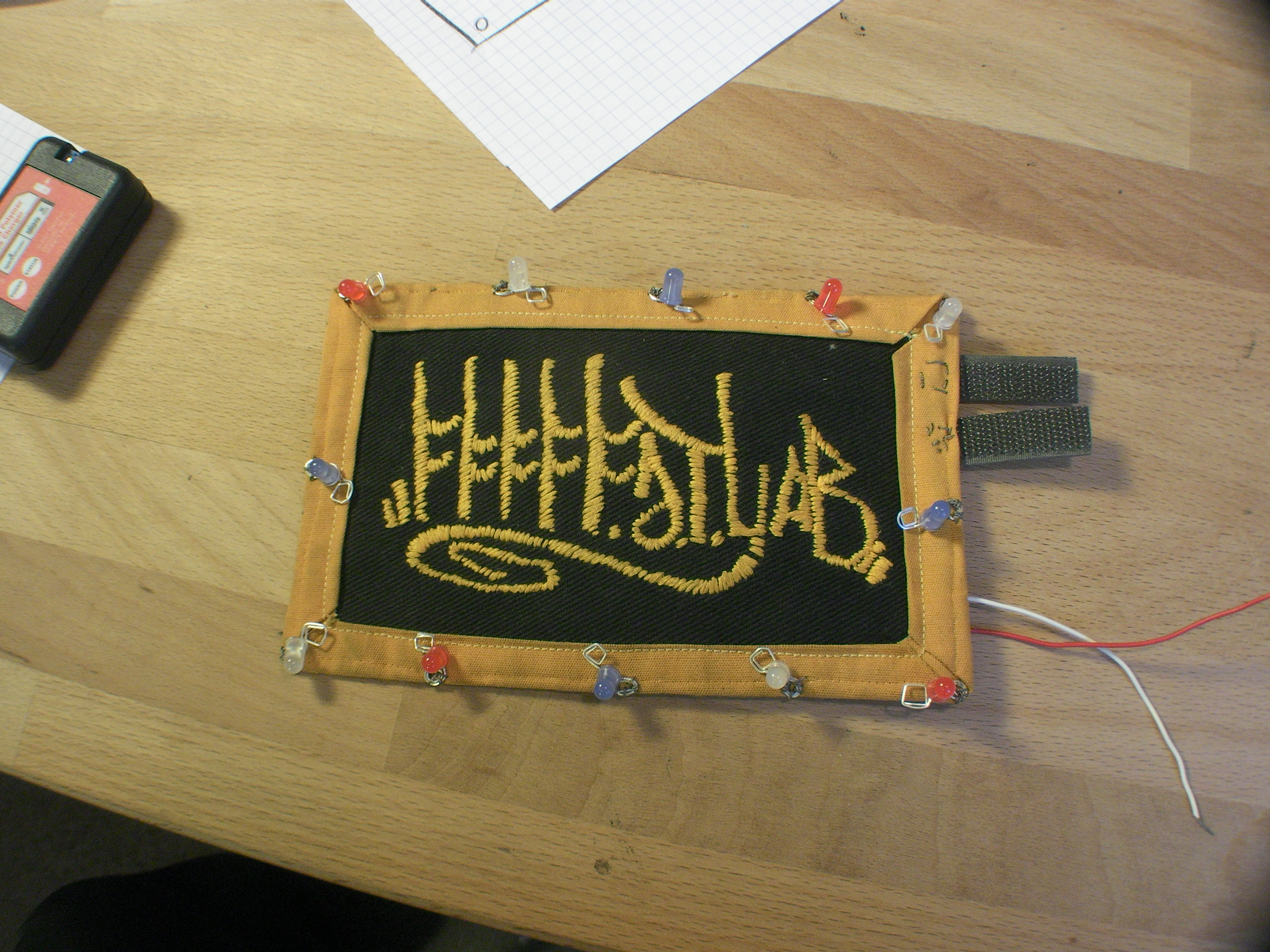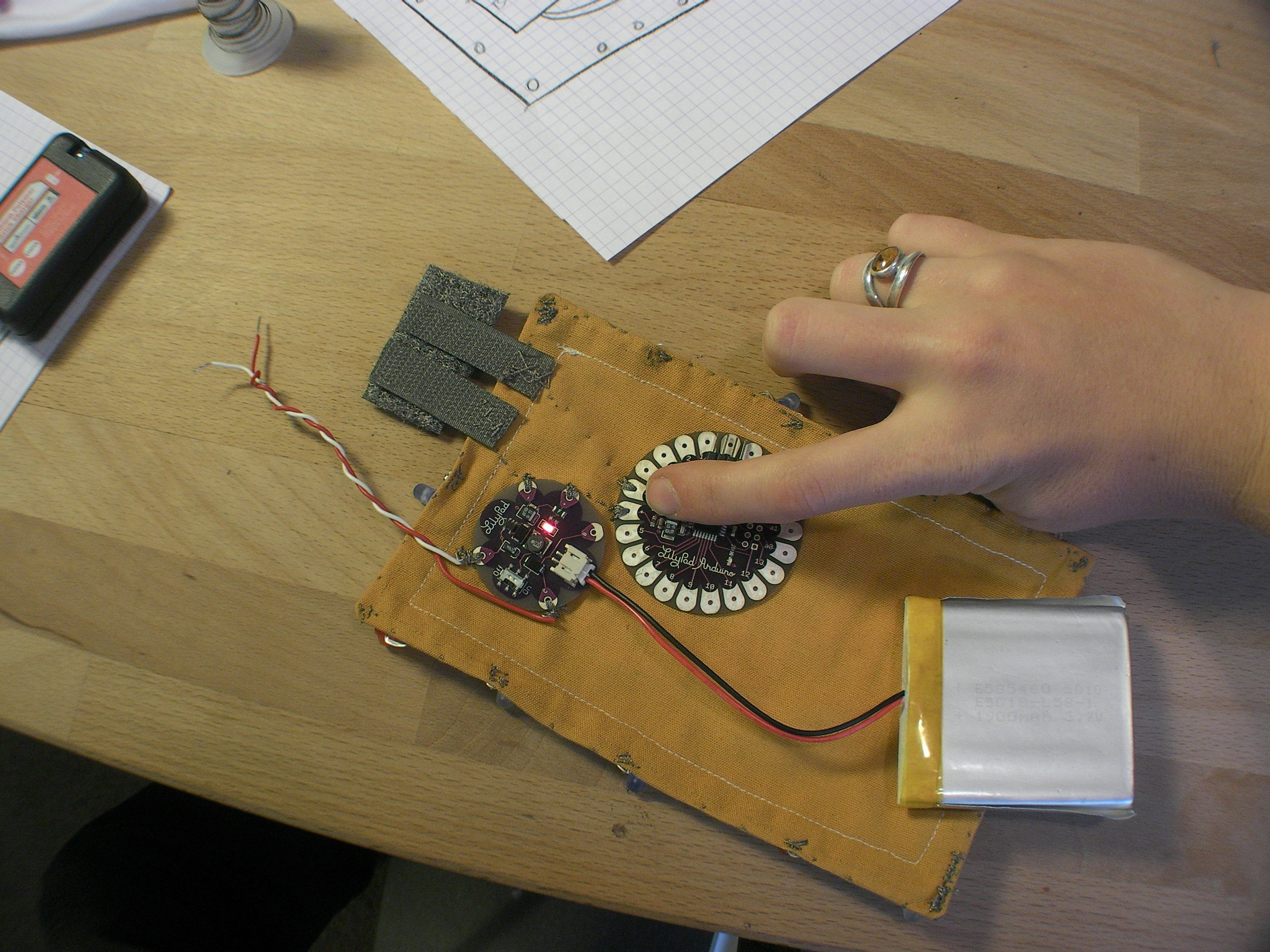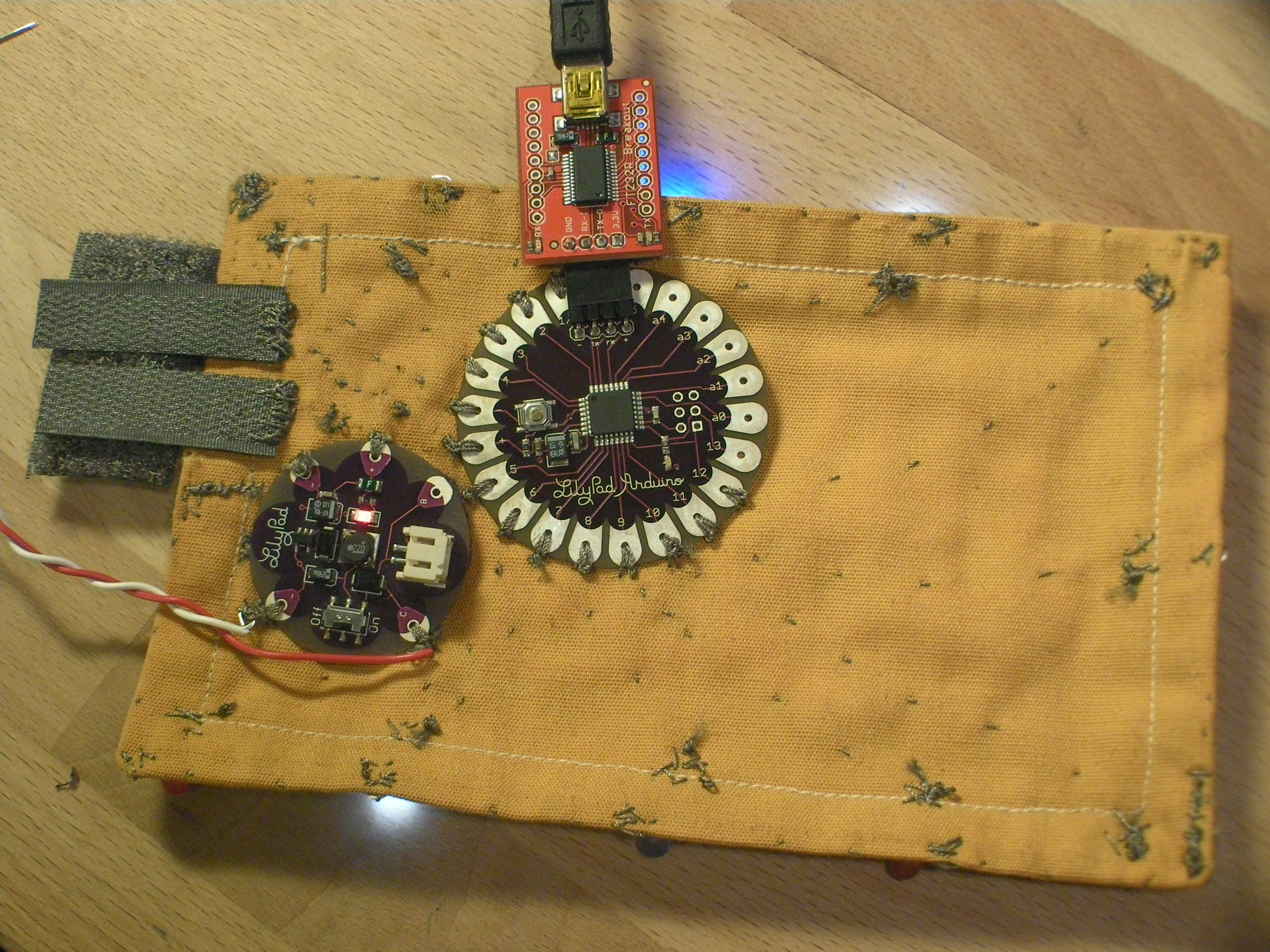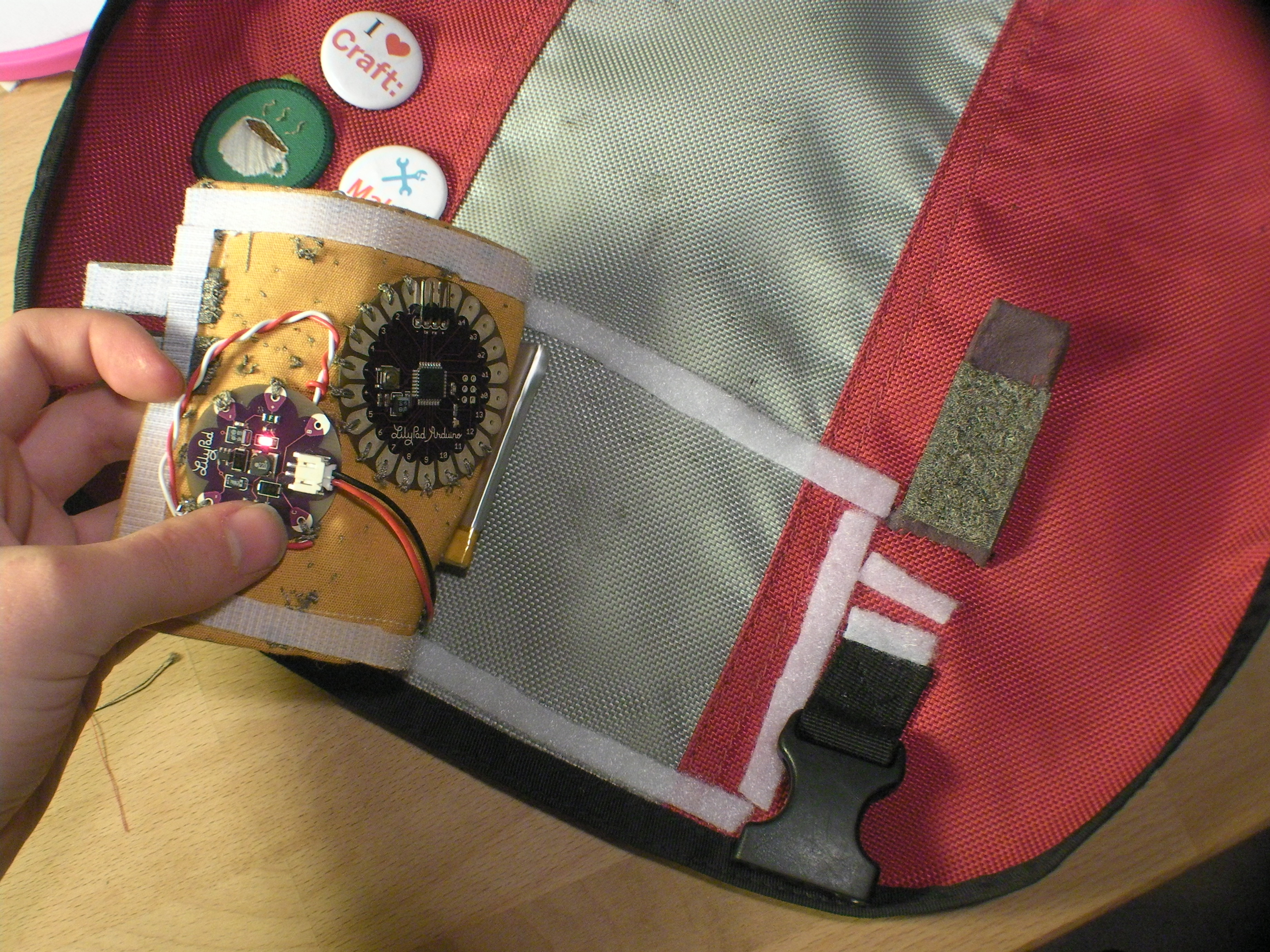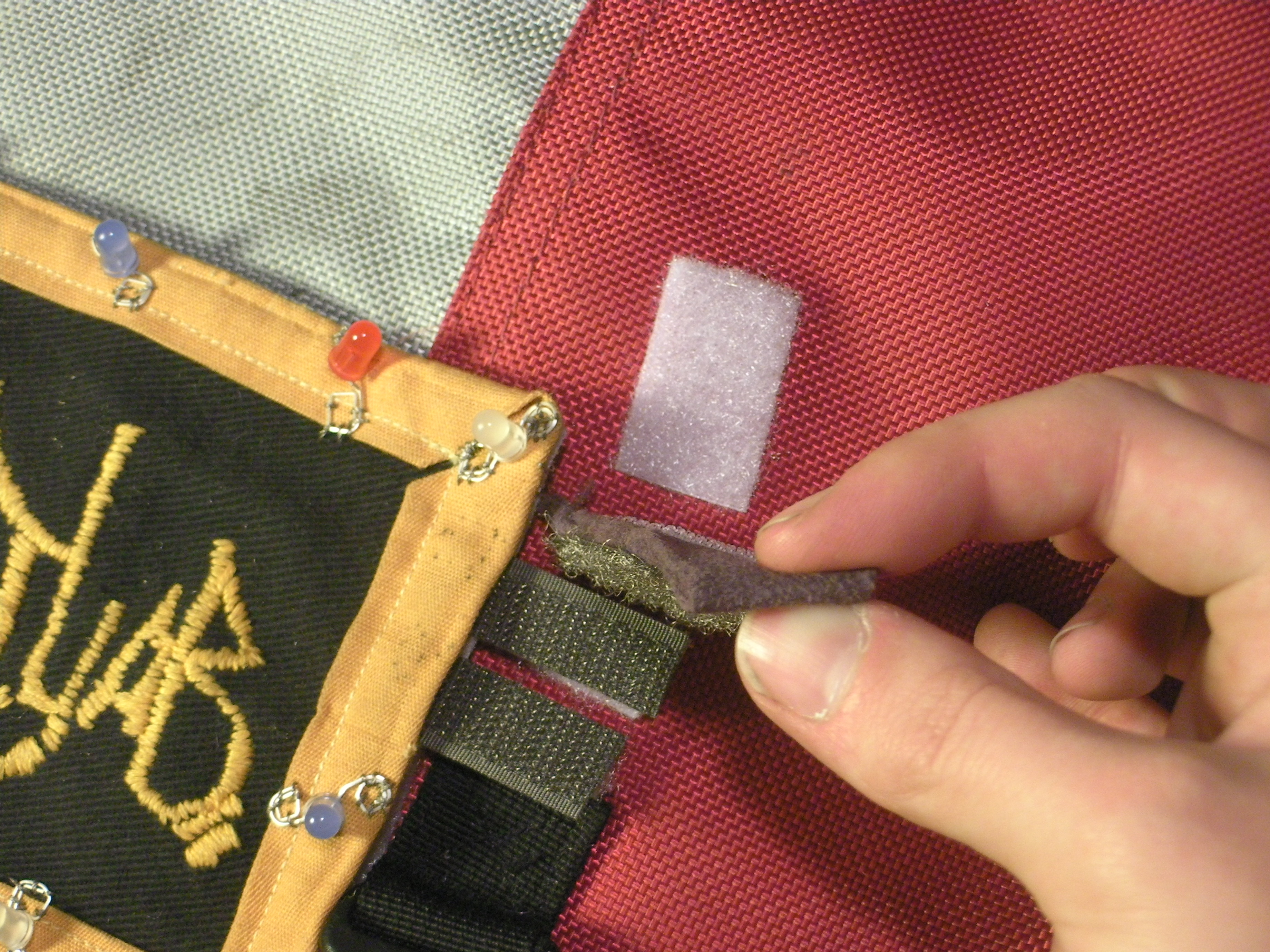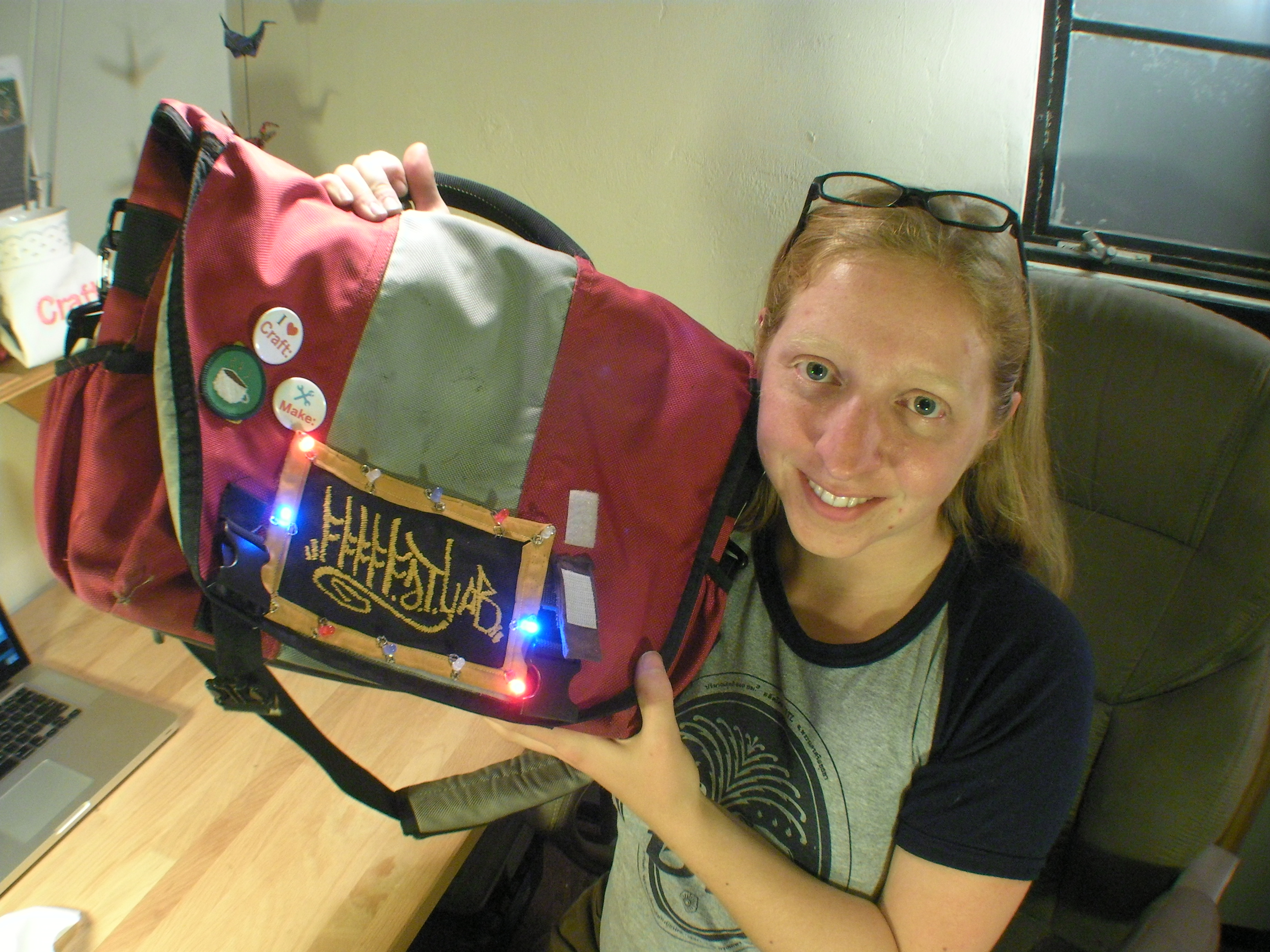Cut one side of the conductive velcro in half, and sew the bottom half over the edge of the patch where you left that space earlier. Sew it down and sew a line over to the + on the LiPower unit (you can also use the LilyPad AAA battery board). The picture shows it sewn to ground, but don’t pay attention to that (or better yet, upload a correct image)!
Sew the other conductive velcro tab down next to (but not touching) the previously-sewn tab. Stitch a line to the + on the LilyPad Arduino. I reinforced these two power leads a few times to reduce the resistance of this switchable area.
Stitch the ground of the power supply to the line of grounds around the edge. Same goes for the LilyPad Arduino. Look at that schematic for help placing the traces.




